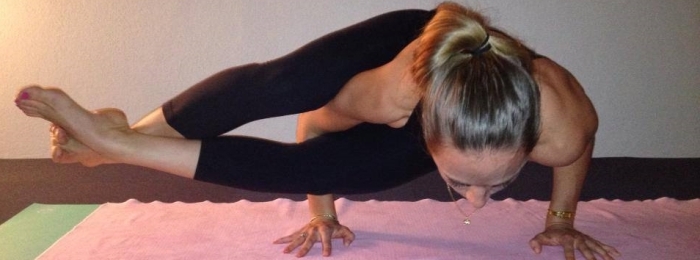You don’t have to be flexible to do yoga!

I think the most common statement I hear from people is ‘I can’t do yoga! I’m not flexible!’.
Did you know that when I started doing yoga I couldn’t even touch my toes? Did you also know that any form of back bending felt like I was in excruciating pain because my upper back and shoulders were so tight? I bet you didn’t… commonly we look at yoga teachers in awe with their flexibility and strength, and assume that we can never get to that level ourselves. We forget that we all start somewhere.
Sure, there are a minority that have it easier than the rest of us; gymnasts and dancers (particularly ballet) tend to be naturally more flexible and sometimes stronger when they begin yoga due to their years of previous training. There may also be a very small few who are naturally flexible for no particular reason at all apart from that’s just the way their bodies are. But, for most of us, it’s a hard slog which at first seems like we will never ‘get there’ (where ever ‘there’ is), but through dedication and commitment to the practice, you certainly can get ‘some where’.
From when I first started practicing yoga (ashtanga yoga), I attended 3 classes per week and after a few months, I incorporated a home practice as well. After a year or so, I changed where I was practicing, and started to attend class a minimum of 5 times per week. But after a couple of years I just felt like I wasn’t getting any further in my practice. Sure I was improving and had improved so much since I first started, but it felt like there was this blockage in my upper back and somewhere in my hamstrings. Every time I did a forward fold, there would be this intense burning sensation down the back of my legs and up my spine. When it came to back bending, I felt like a stiff wooden board trying to flex with nowhere to go.
Then one of my teachers suggested I try yin. I didn’t enjoy yin at all, but I knew the benefits would outweigh the discomfort I was currently enduring. I then attended a yin yoga teacher training and spent a week learning yin in more depth. After that week (which was not easy, in fact it was very challenging both physically and mentally) my body just seemed to open up to a whole new level.
From here, I undertook the 2 year Hatha Vinyasa yoga teacher training, maintaining a practice of minimum 5 times per week. I still maintain that practice today. I incorporate my usual ashtanga classes, plus a yin and vinyasa practice most weeks too. Now I am not saying you need to practice this much yoga, but for me it is my way of life, and even one day without it I notice my mind cannot settle, I feel quite uptight, and physically my body feels so much better for it as well.
Over the course of my practice, I have been injured many a time in yoga. But I didn’t let any of my injuries stop me from practicing. Instead, I altered my practice to what I could do, that didn’t aggravate my injuries in any way. Funnily enough, being injured is actually a great way to delve into your practice more. I guess you could think of it as a ‘fine tuning’. When you begin to slow things down more, I believe that’s where you really see the changes occur, physically and mentally. You bring more awareness to your practice.
So the point to this blog is you really don’t know what your body has installed for you with yoga, on any level. Through dedication and commitment to the practice, I believe you really will see changes in the body. They may start purely physical at first, but maybe without realising it, it is bringing you a sense of calm as well. Perhaps at your next class, notice how your mind is before and after class, and see if anything has changed. Above all, NEVER SAY NEVER. If I had of believed that when I started yoga, I would still be unable to touch my toes.
